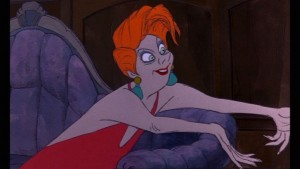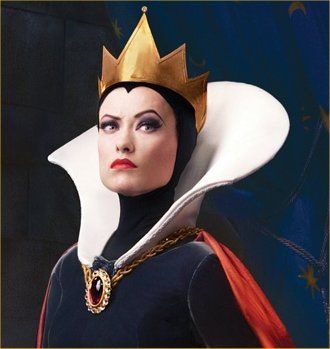It’s been my experience that millennials, and to a lesser extent Gen X’ers, do not have a firm grip on Good. The decline of the historic American moral culture and the rise of the popular culture to replace it the past forty years has a lot to do with this watering down of Good. Older people with memories can point fingers in a dozen different directions, especially with the demise of building children’s moral teaching around family and church.
It’s an accepted principle of science, religion, and politics that the lessons kids learn from ages 8-12 are the ones they hold onto longest, and are more likely to return to, no matter how many crossroads they later encounter. This is why it has always been a major objective of the Left, largely achieved, to get to those 8-12 year-olds first, via public schools, and employ every tool available to discount religion and family-based ideas of morality and substitute its own secular priorities. A 50% divorce rate and single-parent households have helped in this endeavor.
But in thinking they had excised an appreciation for Good from American youth’s psyche, what the Left has failed to do is create an equal lack of awareness about Evil, leaving the backdoor to Good slightly ajar. Maybe this is because the Left doesn’t really believe in Evil except as that which denies them their purposes. Among narrow-thinking academicians this is actually a form of psychological teatfittery, beginning with Marx, but it’s a concept that doesn’t register with kids in that very formative demographic of ages 8-12.
I’m not quite sure what the Left’s longer game is with millennials, perhaps to build a herd from which various classes of soldiers can be culled, from the rank-and-file cannon fodder we find on Twitter to the academic (Jonathan Grubers) and political (Obama) movers and shakers who in fact do seem to be taking control of our world on bureaucracy at a time. But they seem to have grossly miscalculated the kids, and ironically, signs of this may be found in the way they have reacted to Bernie Sanders, who millennials see as a kindly old grandfather-type, fighting against the same evils they had been brought up to hate…only they were not taught these things by mom (with no dad), nor in 5th grade by the polar-bears-can’t-swim or Edith-has-two-dads teacher. They got their image of Evil from Hollywood,for not one in a hundred millennials know anything about the “isms” Bernie Sanders preaches. He just seems nice and he hates what they perceive evil to be…an “Evil” they can grasp effortlessly without any critical thinking.
So, never mind that many millennials express themselves with wicked, scatological mockery on Twitter. Thanks to Donald Trump, we’ve now learned that the “androgyny-ectomy” performed on 5th graders, turning them into girlie-men and boyee-girls has also been successfully performed on many self-professing conservatives, having left behind, or perhaps never having actually grasped critical thinking, just to satisfy that inner-teatfittery. The Frenchman La Rochefoucauld once said that “hypocrisy is the price that vice pays to virtue” but even the scatological mockery from the adrogynist kinder at RedState.com, while serving no discernible Good, still must paint everything they hate as “Evil”.
But I’m not here to discuss Donald Trump’s ability to push the tantrum button inside so many small-minded souls, although it is prodigious. He does seem to be able to turn educated thinkers and writers into mumbling children.
What I am discussing here, for the benefit of Donald Trump’s campaign advisers, is the power Evil has over such a large number, probably even a majority, of millennials…but seen as a BAD THING.
This is good.
Just look at the films millennials like and their most popular books, especially fiction. Do a twenty year scan. I’m not suggesting you actually watch their films, but there are dozens upon dozens of trailers out there…and almost all, as their main selling points, portray 1) a nebulous good, which, in the literary sense of “character development” is never really developed, but 2) always pitted against an over-powering image of Evil, which is depicted down to the last apostrophe. Even the vampire themes, all about the undead, very popular in print and film, (Twilight, Vampire Academy) all pit good undead, even chaste and caring undead, against bad undead, the key defining fang marks being the badness of the bad side. That the good vamps are Ozzie and Harriet Undead is not a subject to be thought through very deeply.
Despite their modern alliance, the Left has never been able to staunch Hollywood’s interest in making money selling Evil and heroes to kids.
The Dark Ladies
Some blame Walt Disney, who had an array of wicked women as the central figure of evil in his animated films. Feminists complained 30 years ago, still, great and beautiful actresses will line up to be the wicked witch in some new productions. Beginning with the Wicked Queen in “Snow White” (1937) just in front of Margaret Hamilton’s Wicked Witch of the East in “Wizard of Oz” (1939), the trademark stuck. Today the Snow White franchise has been revised, also Hansel and Gretel as witch hunters, and others, all variations on the same theme. Every time I see Madame Medusa from “The Rescuers” (I’m a Bob Newhart fa0) I think of Hilary Clinton.

Ant reference Dark Lady is a winner, for it conjures up immediate images..
Heroes and anti-heroes
There have always been heroes in film, but for many years had become less noble, Good as we were taught in Sunday School, less visible. This was in part people began to believe a truly good hero to be less believable…on, (see blow) “Star Wars” changed that for kids. The anti-hero is not new. 1940s crime fiction, in film and print, lionized Sam Spade (a creation of a communist who couldn’t sell Marx as well as cynicism) and Mike Hammer, both social cynics, are early examples. Clint Eastwood as the spaghetti western Man With no Name and later, Dirty Harry, and Schwarzenegger in both his Goth film, “Conan” and the “Terminator” franchise, featured heroes representing a sort of undifferentiated Good against an all-hateful Evil, usually trying to enslave the world. Popular television series include “Blacklist” and “Person of Interest” with the same idea of Evil, where the “heroes” don’t wait for court rooms to dish out justice..
The evidence is overwhelming, films against Evil, from Star Trek to Harry Potter, even the White Witch in the Lion, Witch and Wardrobe draws kids to the theater in large number, enjoyed by kids and adults alike. In the “Lord of the Rings” trilogy of films Good even gets equal billing with Evil and I’ll wager the lesson has not been lost on America’s millennials.
Hating Evil sells.
Give millennials a written test and ask them to describe the Evil they saw in any given film, then measure not the quality of their answers, but the sameness of those answers. Then ask the viewers to quantify the Good being asserted in the film and the answers will be all over the board.
The constant with Millennials is hating Evil.
Music
Before I had taken my 7-year old to see “Star Wars” in San Diego in 1977, I had read a Time Magazine review, saying the film represented a return to old-fashioned “Good versus Evil” adventure films. It was a major cultural event.
Although all the great composers wrote of heroic themes, Tchaikovsky composed the first recurring leitmotif of Good versus Evil with his 1812 Overture. Beethoven’s was better, but imagery matters. In 1977 John William’s score for “Star War” established leitmotifs of Virtue, Innocence, even a dash of religion, Heroism and Evil that survive today; his main theme heroic, the march of the Storm Troopers as sinister as a Third Reich march, and Darth Vader’s entrance dark and foreboding. They still draw immediate images, and are found in later film music for they guide the audience to the same places, where heroism and Evil dwell and theater seats are filled. (One of my favorite western film themes, Silverado and which I had always thought would suit a Trump rally, is a by-product of the ability of music0makers to capture the imagery of heroism.)
Words Matter
It’s not for me to write the scripts, or list the key-word themes for Mssrs Trump, Lewandowski, Manafort, Scavino & Co, but I know that the term “dark”, “darkness” works with Millennials, as do the imagery. You don’t have to be Fellini to be able to tie them in with Mrs Clinton, Elizabeth Warren, even the entire Democrat Party…except for granddad Bernie. (Do a soft shoe around him.) I’d find every way to weave those words and images into encouraging millennials to think twice about our candidate and think less about the dark ones.
There are dozens of words that have similar eye-to-mind connections. Just ask yourself, Why does every Dark Witch remind people of Hillary, and every modern movie villain remind kids of weenie bureaucrats? (The last two from Jurassic Park and Pirates of the Caribbean, villains all, but only two who got their just desserts in the end.)




